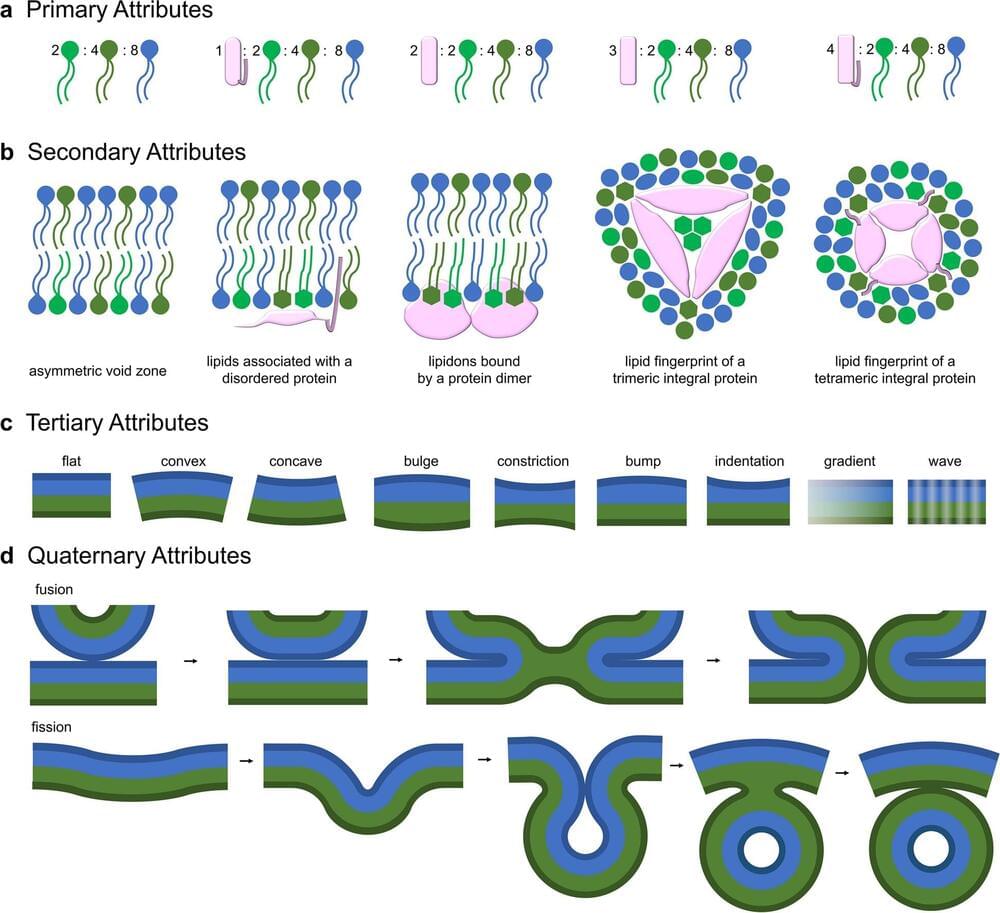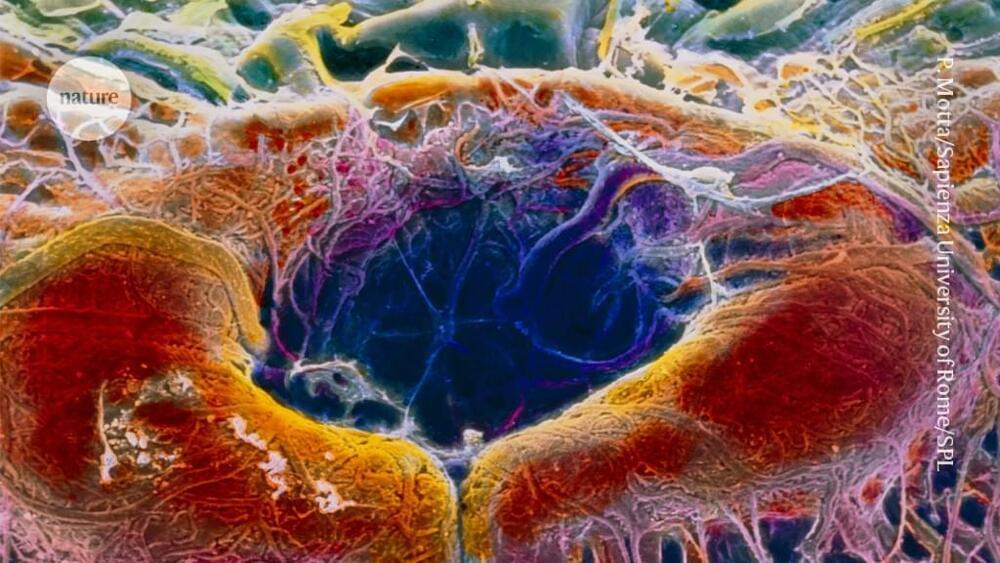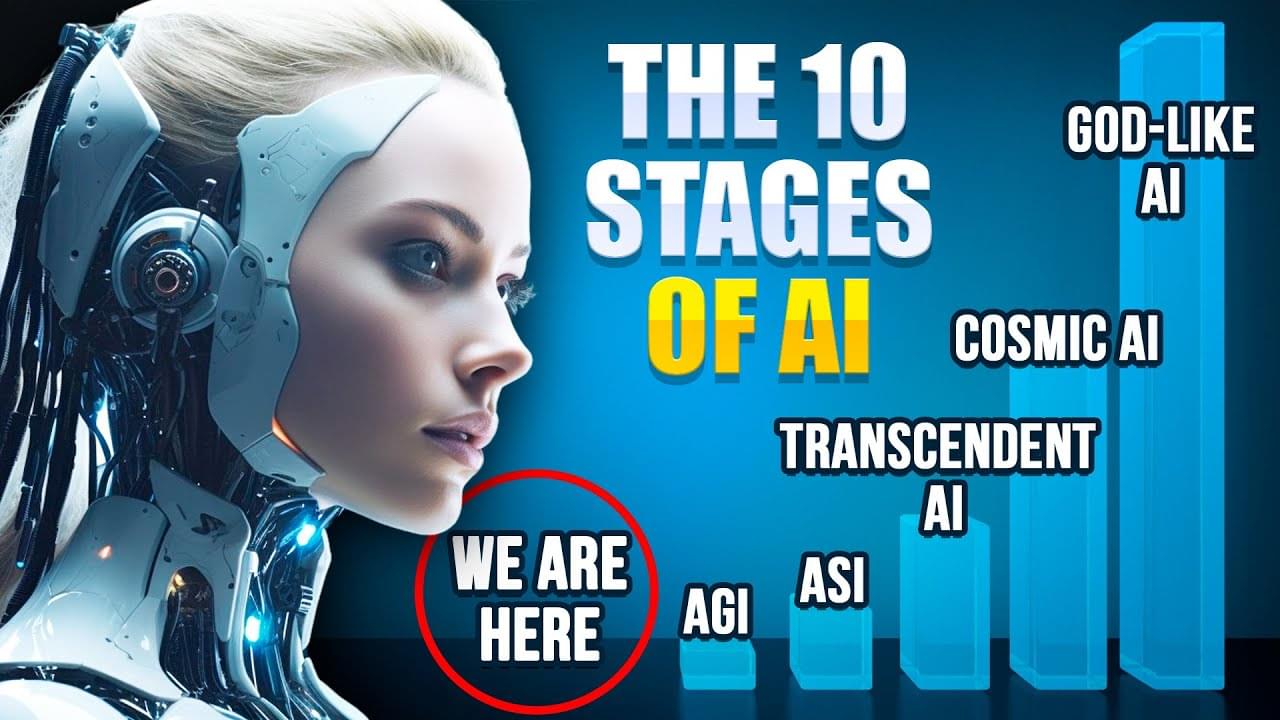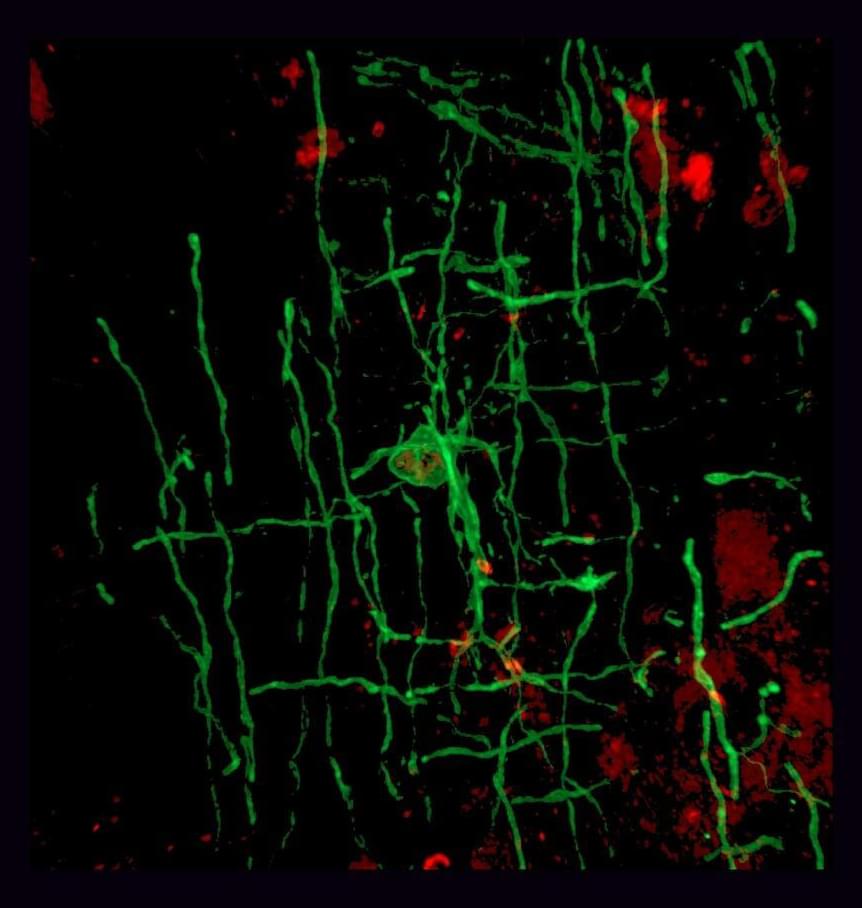Feb 29, 2024
Research team uncovers universal code driving the formation of all cell membranes
Posted by Paul Battista in categories: biotech/medical, genetics
Researchers at the University of Alberta have uncovered what they say has been the missing puzzle piece ever since the genetic code was first cracked.
The code is the universal set of rules that allow living organisms to follow genetic instructions found in DNA and RNA to build proteins. In new research, published in BMC Biology, the U of A team describes a unifying code that guides the binding of those proteins with lipids to form membranes—the wrapper around all cells and cell components.
“Sixty years ago, scientists started to work on how genes encode proteins, but that’s not the end of the story,” says biochemistry professor Michael Overduin, executive director of the National High Field Nuclear Magnetic Resonance Center. “Along with DNA, RNA and proteins, living cells require membranes. Without the membrane, it’s like you’ve got a house with no walls.”


















